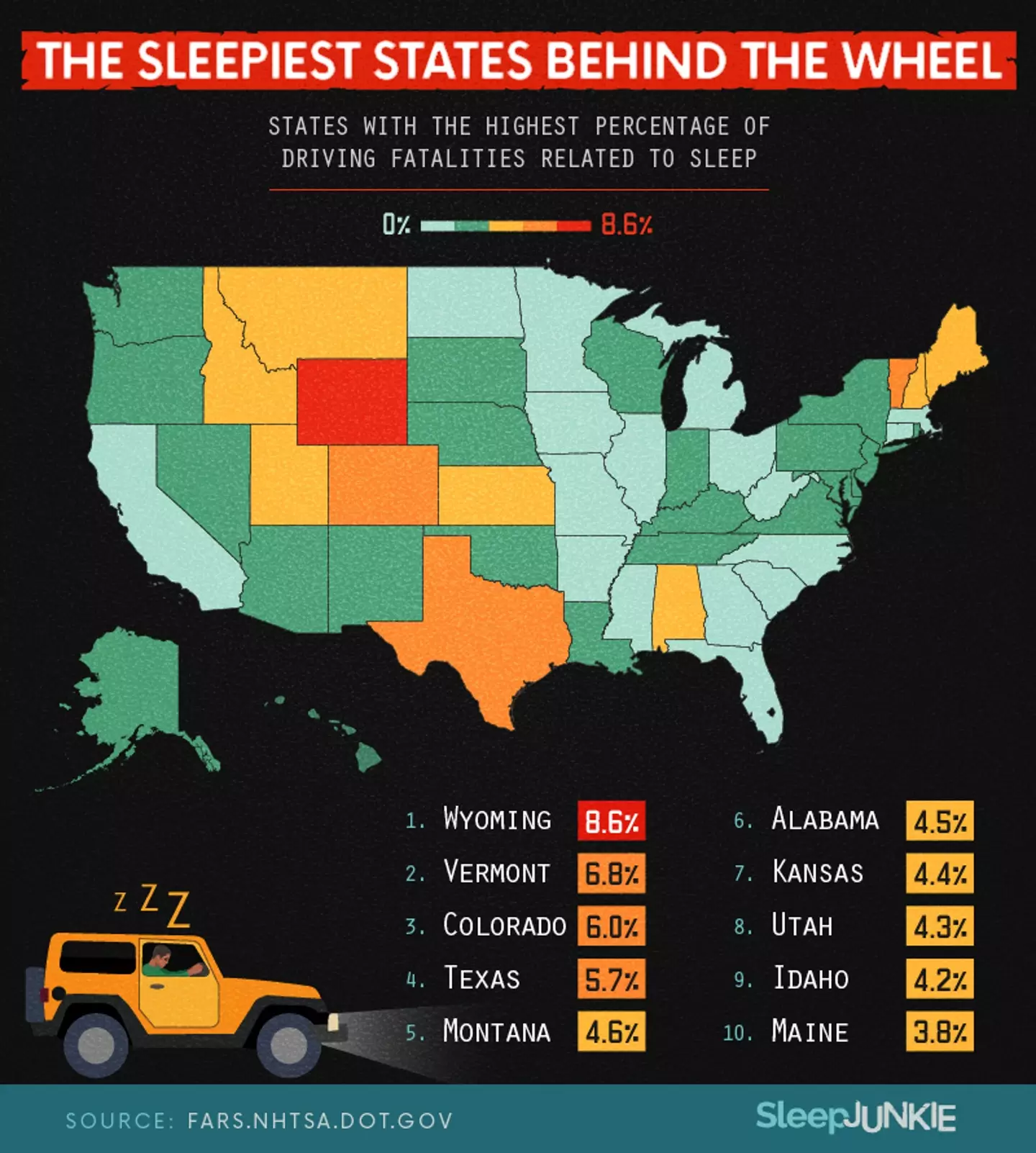Drivers in the US are receiving a crucial alert regarding a prevalent road behavior that results in the deaths of over 1,500 individuals annually.
For many, cars are indispensable, whether it’s for going to work or running errands.
Despite its advantages, driving inherently carries risks, much like other aspects of life.
Various factors like distracted driving, speeding, and hazardous road conditions lead to tens of thousands of vehicular accidents each year on American roads, with nearly 50,000 fatalities reported nationwide last year alone.
However, there’s another hazard contributing significantly to preventable driver deaths that many might unknowingly participate in.
In fact, millions partake in it daily, and its danger can rival or exceed that of driving under the influence of alcohol.

Approximately one in 25 American drivers confesses to engaging in this practice, as specialists warn of a concealed road safety crisis facing the nation.
The issue at hand is driving while fatigued.
Recent insight from SleepJunkie.com emphasizes the grave nature of drowsy driving and highlights specific times when sleep-related accidents are most fatal.
The National Highway Traffic Safety Administration (NHTSA) estimates that annually over 1,500 fatalities occur due to drivers falling asleep at the wheel.
Being awake for 18 hours can impair a driver similarly to having a blood alcohol concentration of 0.05, and staying awake for 24 hours equates to being over the legal limit. While impaired driving frequently captures media attention, the perils of sleep deprivation often go unnoticed.
Meg Riley, a Certified Sleep Science Coach, states: “Many people underestimate the risks of driving while tired, but the science is clear: sleep deprivation can be just as impairing as alcohol. When you get behind the wheel without enough rest, you’re not only endangering yourself, but everyone else on the road.”

Research from SleepJunkie indicates that the most dangerous time to drive is between 6am and 7am, with the surrounding hours of 5am and 7am also posing high risks.
Poor road conditions further exacerbate the danger, as dimly lit roads increase the risks associated with drowsy driving.
Weather conditions such as rain, fog, and the faint light of early dawn are commonly tied to fatal accidents.
The study, which analyzed six years of data, reveals Wyoming as having the highest rate of fatal sleep-related accidents, accounting for nearly nine percent. Contributing factors likely include long, isolated roads, severe winters, and limited rest stop facilities.
Vermont, Colorado, and Texas follow closely, each with approximately 6 percent.
Texas’s position is attributed to its numerous hazardous highways, a characteristic shared with other top states like Alabama, Kansas, and Colorado.

Meg emphasizes the critical need for adequate sleep before embarking on long journeys, recommending seven to nine hours of rest.
If possible, avoid traveling during peak ‘danger hours,’ particularly in the early morning following insufficient rest.
While driving, keep alert by listening to engaging audio, arranging calls with friends or family, and sharing driving responsibilities when feasible.
Be vigilant for warning signs like frequent yawning, heavy eyelids, or lane drifting, which indicate a need to stop and rest.
Meg also advises taking breaks every two hours or every 100 miles.
She suggests opting for rest stops rather than relying solely on willpower.
“Coffee and energy drinks can only do so much; real rest is the safest solution,” she remarks. “The good news is that these tragedies are preventable. Getting adequate sleep, knowing when to pull over, and recognizing the signs of drowsiness can dramatically reduce risk.”
“Just like we have campaigns against drunk driving, we need the same urgency for drowsy driving; it’s a public health issue that affects every commuter, traveler, and family on the road.”

